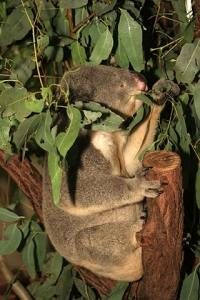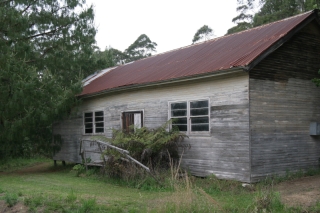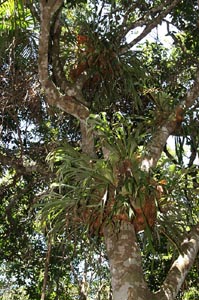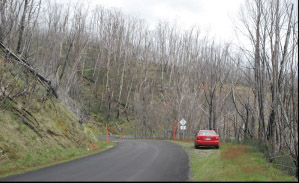Australia, 2005
 Photos © R.Leeuw
Photos © R.Leeuw(Photos can be enlarged by clicking on them)
 Photos © R.Leeuw
Photos © R.Leeuw
|
After our stay in Sydney (and getting over the jetlag) we flew to Cairns; the idea was to drive from Cairns to Melbourne and we had 16 days to do it... While driving I quickly found I had made the typical first-visit mistake: to underestimate how big this country is! Well, the race is on... |
 Trips like these are firmly on the beaten tourist path, but quite nice all the same. It was the closest we would get to the Great Barrier Reef, time and budget being an issue.
Trips like these are firmly on the beaten tourist path, but quite nice all the same. It was the closest we would get to the Great Barrier Reef, time and budget being an issue.
There are a few things to do while on this tiny island. |
 We took a tour on a glass-bottom boat and received full explanation on the Coral Reef. It is of course nice to see it this way but I must admit I like the "Technicolor" Sydney Aquarium better.
We took a tour on a glass-bottom boat and received full explanation on the Coral Reef. It is of course nice to see it this way but I must admit I like the "Technicolor" Sydney Aquarium better.
|

There is also a possibility to visit the Reef by plane, even without an airport here. The floatplane is a vintage DeHavilland DHC-2 Beaver and it is an attractive option for me for a future visit. |
 Cairns is city for things to do. The wet thing for us was Green Island, the dry thing was a hike on Mt. Whitfield (no photos, sorry).
Cairns is city for things to do. The wet thing for us was Green Island, the dry thing was a hike on Mt. Whitfield (no photos, sorry).After we had done all we had time for and a quick visit to Target (where we shopped with Christmas music playing through the speakers and outside temperatures 30+ C... really weird), we drove a scenic, mountainous route via Mareeba, through enchanting rainforest. We saw Cassuwary and also a snake, crossing the road. We backtracked to the Queensland Coast and continued south on the Bruce Highway. Speedlimits allow for 110 km/h and roads are single lane mostly; at first I ignored the speedlimit but found I could not enjoy the country side so we settled on the speed limit (most of the time). Motels are not as abundant as in the US or Canada, but most towns offer a place to stay; the photo shows a cabin we rented for 1 night in Bargara (near Bundaberg), right on the ocean front; these cabins are an excellent alternative to motels. |
| I like car wrecks such as this one... I also liked the roadsigns, warning against fatigue: "Rest, or R.I.P". There were many more, with the same wry sense of humor. |
I also like deserted structures such as abandoned gasstations; I cannot explain this fascination! |
 We detoured through Bundaberg for the museum of Bert Hinkler, a famous aviator; but we also found the Botanical Gardens here a pleasure to visit.
We detoured through Bundaberg for the museum of Bert Hinkler, a famous aviator; but we also found the Botanical Gardens here a pleasure to visit.The park has been planted with a mixture of exotic and native shrubs and trees as well a variety of rainforest trees and flora. Plants and trees and lagoons attract at least 114 bird species! |

Do you think his comment is anything like: "be careful or you will fall in?" |

|

|

We did not visit much of Brisbane. We don't all that much care for cities. But we did have our minds set on visiting the Lone Pine Koala Sanctuary. It is the world's first and largest Koala sanctuary, with over 130 koalas. They also have a large variety of Aussie wildlife, such as Wombats (below) |

|

|

A church: abandoned? |

A shed (?) on the beautiful scenic drive to Dorrigo |

South West Rocks sits on a very nice bay. That is probably the attraction: the beaches again. |

|

|

|
 The Blue Mountains is densely populated by oil bearing Eucalyptus trees; the droplets of oil, in combination with dust particles and water vapour, scatter short-wave length rays of light which are predominantly blue in colour... hence the name.
The Blue Mountains is densely populated by oil bearing Eucalyptus trees; the droplets of oil, in combination with dust particles and water vapour, scatter short-wave length rays of light which are predominantly blue in colour... hence the name.In 1788 the Blue Mountains were originally named "Carmarthen Hills" and "Landsdowne Hills" by Governor Phillip; but the distinctive blue haze surrounding the area saw soon the name changed to the Blue Mountains. We stayed in Katoomba for 1 night and did a small hike; the view over this wilderness is simply breathtaking. |
| Echopoint in Katoomba is very well known and hard to miss; you may have to share the view with a busload of Japanese, but it definitely is worth to stop and stare. |
Stanwell Park is Sydney but only just. It sits south on the coastline and a favorite place for these dare-devils! There is also a statue of Lawrence Hargraves here, a famous Australian aviation pioneer. Thanks Stephen for pointing this out to us. |
 Canberra. I'd heard it wasn't a vibrant town, but I'd heard good things too, so I approached this town with an open mind.
Canberra. I'd heard it wasn't a vibrant town, but I'd heard good things too, so I approached this town with an open mind.We came here to visit the War Museum, or the Australian War Memorial as it is officially called. Now that is a one terrific museum! It deals with wars the Australian participated in. I had to give up my camera bag (no rucksacks allowed), which I most reluctantly did, but it is definitely worth the visit. It is very visual, it has a zillion displays, complete aircraft and military vehicles, excellent diorama's. Really, really good. There may be a few other things to visit in Canberra, but we had no time and had to continue south. Without a map you probably cannot find the motels or shopping malls here. The center of town did not even have a gasstation. We had some trouble finding the route out of town. Not a town I want to revisit I think (though the countryside around it is exquisite). |

The War Memorial is a good outcry against the insanity of war. |
 One of many excellent diorama's: this one shows the tunnels the Vietcong made under their villages. For aircraft on display here, see my aviation account |
|
We drove south to Cooma and headed back up the Snowy Mountains Highway; from the flat scenery (with mountains on the horizon) we entered the mountains and forests again. The road was very lightly travelled. Dark clouds travelled, a wombat crossed the road, we had miles to go: great! The Snowy Mountains is of course a place to stay and do hiking or serious sports; not for us, not this time. For more than 20,000 years the Snowy Mountains were home to a number of Aboriginal groups with a unique way of life. The high country was first settled in earnest by European stockmen, graziers and landholders in the early 1800s. In the 1860s thousands of people from across Australia, Europe and Asia flocked to the gold rush town of Kiandra. This is now grazing and skiing country. The region produces fine wools, lamb and stud cattle and sheep, but its main attraction to the visitor is the high country (containing Mt.Kosciusko, Australia's highest peak), where lies Australia's premier ski fields. And since the mid-1900s, the Snowy Mountains attracted surveyors, hydrographers and engineers who sought a way to harness the power of the high country's great rivers. The lakes, dams and hydro power stations created as part of the Snowy River Hydro Electric project developed during the 1950's are Australia's largest engineering works to date. |

|

|

|
 Being Dutch and an aviation enthusiast I felt obliged to visit Albury.
Being Dutch and an aviation enthusiast I felt obliged to visit Albury.A Melbourne businessman, Sir Macpherson Robertson, sponsored London to Melbourne Air Race in 1934. There was a category for speed and a race by handicap (some planes were custom built for racing, while others had not). The distance was over an 11,300 mile course; 20 entrants took part; 11 finished the course; 3 aircraft crashed; in 1 case killing both crew. The Dutch connection here is that a Douglas DC-2 from KLM Royal Dutch Airlines won the handicap race; they finished second in total. It almost ended here for the DC-2, as an emergency landing was made on a racecourse here and had the people from Albury not performed heroically, the plane could have bypassed this town in darkness and crashed in the vicious weather. More can be read on http://www.dc3airways.com and a personal account by a passenger. More on this memorial can be read on my aviation account |
Extenal links:
Lynn and John Salmon, Melbourne-Cairns 1995; how it can be done, with more time available.
|